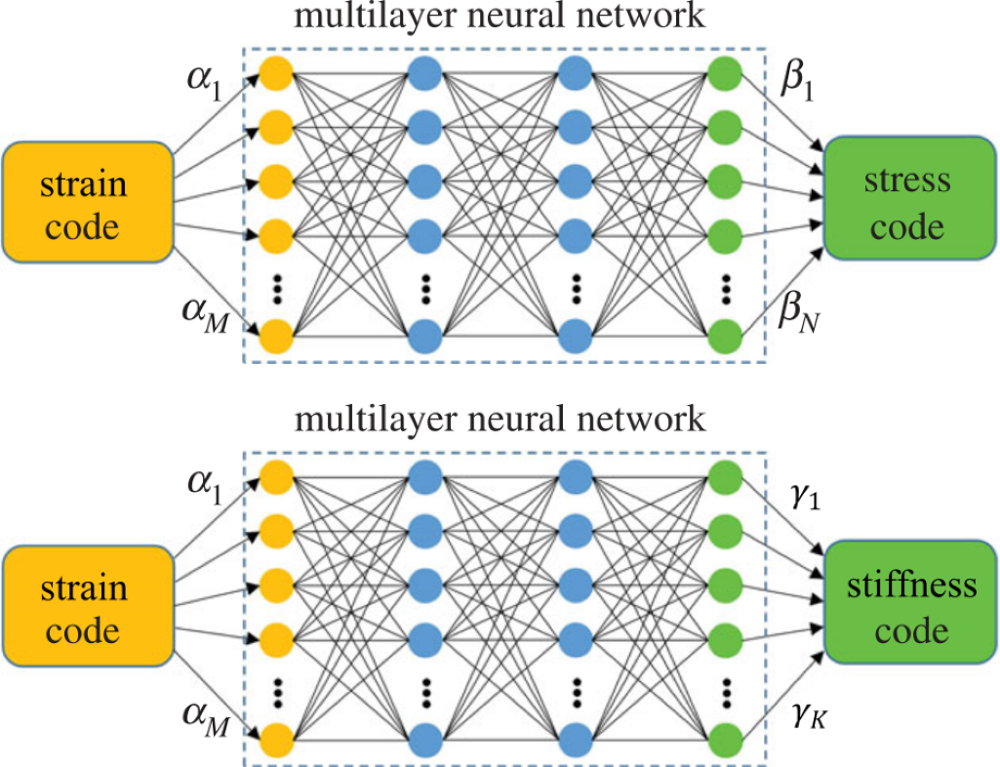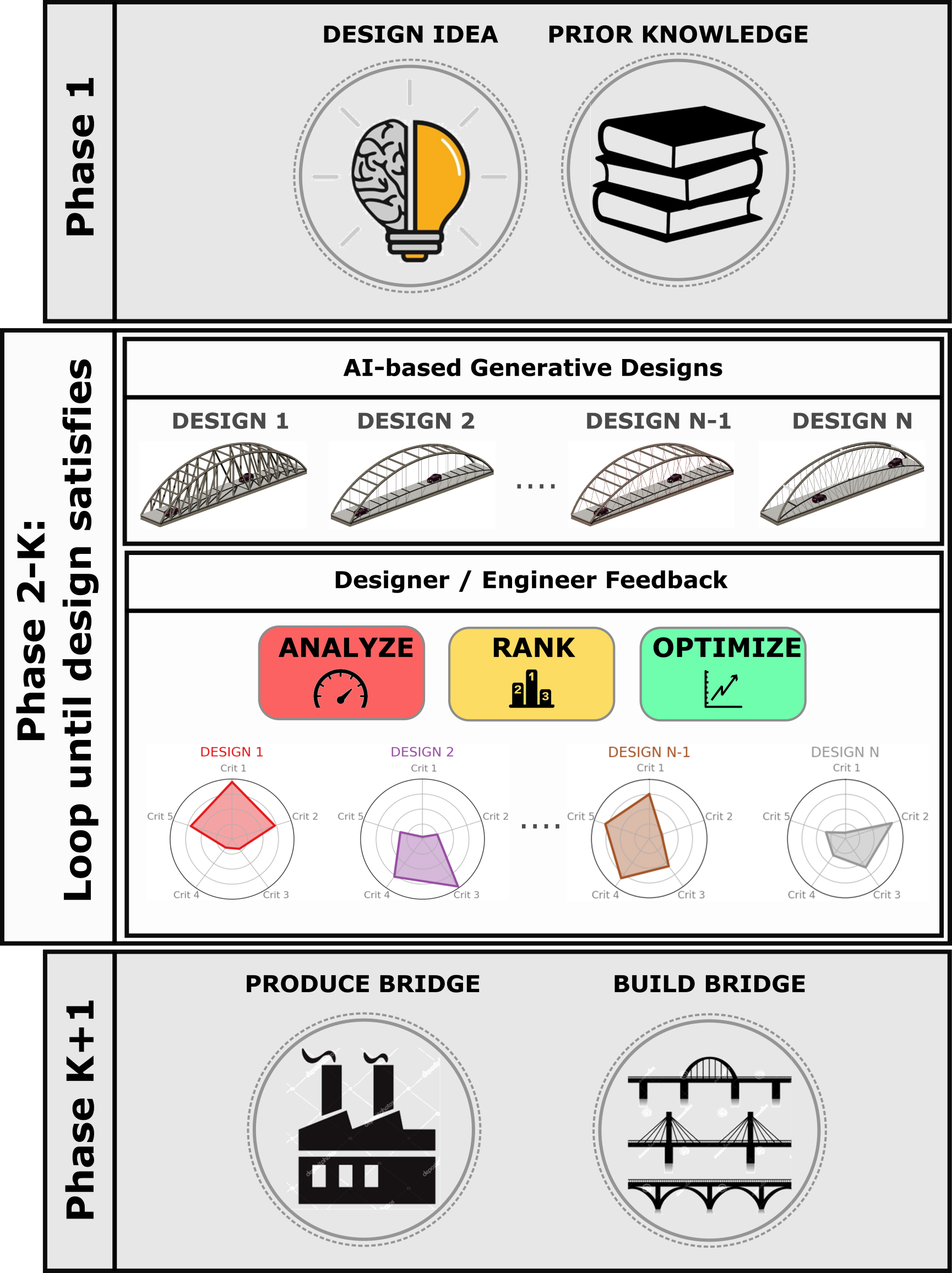AI-based analysis & optimization of concrete structures
Digital design and manufacturing methods, such as those to be developed in the new Immersive Design Lab, offer great potential for significantly more efficient and sustainable construction. In order to ensure the structural safety, economic efficiency and sustainability of complex structures, reliable and powerful models for automatic analysis, optimisation and design are essential. However, such models are largely lacking to date. This is especially true for concrete structures, as their behaviour is highly non-linear. Realistic structural analyses and optimisations using the non-linear finite element method (FE) are possible today. However they are proving to be very time-consuming, even when using extraordinary computation capacities. Hence, for reasons of temporal and monetary efficiency, traditional (and in many cases excessively conservative) design methods without structural optimisation are still used in the vast majority of projects today.
Approach: The proposed research project addresses this unsatisfactory situation with a two-phase research approach that combines conventional design and dimensioning methods with a design data pool of the Chair of Concrete Structures and Bridge Design using methods of Artificial Intelligence (AI). This will allow
- realistic structural analyses taking into account non-linearities and
- structural optimisation to be carried out much more efficiently in the future.
In the first phase, non-linear FE models for reinforced concrete plates and slabs developed at ETH Zurich are combined with AI methods to create hybrid AI-FEM models. These are much more efficient than established analysis methods both in terms of the computing power required and the reliability of predicting the load-bearing behaviour. With the completion of the first phase, a validated software demonstrator of AI-FEM hybrids for the efficient non-linear analysis and design of reinforced concrete structures is available.
In the second project phase, we will investigate AI-related approaches upon extensions of the software of the AI-FEM hybrids to tackle the structural optimisation problem, with a focus on concrete bridges whose design space is delimited by an underlying basic parametric design. Having established the numerical optimisation pipeline, a two-stage approach for investigating the suggested data-driven yet physics-informed optimisation of concrete bridges is applied. In the first stage, we use the parametric design framework to create numerically multiple data sets of the bridge responses for several input parameter value combinations in order to produce a sufficiently large database for the second stage of investigation. The parameter intervals are carefully chosen to ensure practical relevance and the success of AI algorithms in the second stage.
The second stage consists of feature selection/dimensionality reduction procedures (i.e. relative relevance assessment of the design parameters) and reduced-order modelling of the optimisation problem, based on the database of stage one. While this approach is essentially data-driven, physics-informedness comes into play through structural analyses of the resulting bridge layouts to guarantee meaningfulness of the optimisation results. This part of the study yields valuable and engineering practice-relevant insights into the most important design parameters for the bridge type under investigation. Furthermore, the developed AI-tool allows for a numerically fast estimation prediction of the structural performance of a bridge design given certain specified test case parameter values by means of alternative AI techniques.
Novel Contribution: We aim at developing AI/FE/CAx-Hybrids that are much more efficient than currently available analysis methods w.r.t. computational costs and predictive capabilities/correctness. This is used for the optimisation of structures, while maintaining mechanical consistency through regularising the respective AI components. The pilot project focuses in this phase on concrete bridges with a geometry defined by few parameters. The developed optimisation methodology is kept as general as possible, which allows an application beyond parametric bridge structures.
Outcomes: The project is a first step towards AI/FE-Hybrids that can directly be used in the analysis and design of concrete plate, shell and bridge structures. These include geometrically simple or complex structures, yielding accurate predictions of the true non-linear response. Thereby, the new methods open the way for
- a new generation of structural analysis software and
- the efficient use of the IDL for concrete structures.
This project furthermore delivers a ready-to-use prototype software pipeline for the optimisation of bridges and structures by combining data driven and physics-informed AI with parametric design and analysis.
As the methodology is kept general, this hybrid parametrized design-analysis approach digital twin can be applied to the optimisation of structures consisting of simple or complex geometries. This can be achieved together with (geometric and material) non-linear geometric and material response with special emphasis of the user’s choice on the influence of sustainability or monetary aspects on the design optimum. The AI/FE-Hybrid software serves as a solid basis for the development of hybrid digital twins of concrete structures, which allow for the unified treatment of data processing and computational mechanics within one software framework. These outcomes are potentially of high interest to industry and engineering practice, as structural concrete is the most widely used construction material worldwide and incorporation of these ideas allows for more economic, yet sustainable and reliable design.
Duration: 2020 - 2022
Principal Investigators:
- Prof Dr. Walter Kaufmann
- Prof. Dr. Michael Kraus
- Dr. Karel Thoma
Researchers:
- Dr. Sophia Kuhn
- Rafael Bischof

